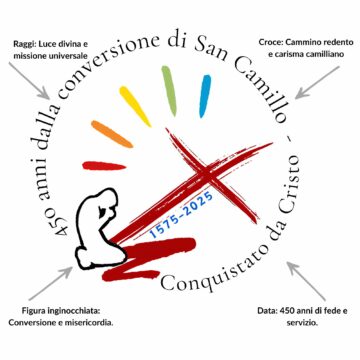A hospice seeks to provide to a patient and his or her family unit those conditions that will enable him to her to live even when the illness seems to have taken control of the situation and when it appears that the patient does not have long to live. Given that its goal is not to lengthen life but, rather, to make the time that is lived more bearable and rich in meaning, a hospice is faithful to its mandate when it accompanies a patient in the process of accepting his or her ineluctable destiny, in achieving reconciliation with his or her past, and in saying farewell to his or her loved ones. We appear to have here the approach of a soap opera, whose outline is only to be found on the silver screen. Reality is cruder and is marked by hardship and suffering, as well – and this is often the case – as by a wish to put an end swiftly to pain and unbearable limitations.
However difficult and at times frustrating it may be, ensuring quality of life until the last moment is the purpose of a hospice! Beyond coming from a good heart and human solidarity, this duty of a hospice derives from forming a part of the services of a national health service whose standards have been repeatedly emphasised by the documents of the Italian Ministry of Health.[1] In deciding upon the appropriateness of an admission to a hospice, these texts refer not only to the health-care situation – which is obvious and cannot be departed from – but also to the complex of needs that are experienced by the patient at the terminal stage of his or her illness and by his or her family. In other words, an admission to a hospice is congruous when it has in mind the needs of the psychological, spiritual and socio-economic spheres of the patient and his or her world of relationships. An example of the attention paid by the legislature to these decisions can be found in the decision – amongst minimal care standards – about the duration of an admission. For residential palliative care to achieve its goals, the admission should not last less than seven days or more than thirty. Indeed, an admission that lasts less than seven days is too short to allow a patient to be aware of his or her imminent passing. When the admission goes beyond thirty days, there is the risk that an inappropriate diagnosis has impeded the patient from being able to live at his or her home days that are full of meaning and sense, thereby transforming the hospice into a department for low-intensity therapy, if not even rehabilitation, fostering or reigniting hopes that can never be realised.
However, the journey of awareness about palliative care and hospices is still a very harsh one. An example of this can be found in conversations with patients and their family relatives, in which the many myths, assumptions and even prejudices about hospices emerge in a clear way – myths that are hard to die. Amongst the commonest ones, there is the perception that a hospice is a sad, gloomy and dark place, a place of hopelessness and sadness. Seen as a sort of ‘last ditch’, its existence is denied with another attitude which is very widespread, namely a ‘conspiracy of silence’, in which family relatives and health-care workers become accomplices, almost as if being in a hospice damaged the health of a patient. This is a silence that is expressed in incomplete answers, in sentences that are interrupted, and in a sudden deafness. The young Oscar, a patient with a tumour and the leading figure in a children’s story, expresses this in the following way: ‘if you say “die” in a hospital, nobody hears you. You can be certain that there will be empty air and that other things will be spoken about. I have tested out everyone. Except Grannie Rosa’.[2] The assumptions, the silence and the resistance to giving space to the fears of patients tenaciously oppose the efforts of the workers in a hospice to achieve their goals!
 The process of accepting that in a hospice there is still space for life necessarily passes by way of the humanisation of the activities that are engaged in within it. In addition to professionalism and competence, attention and dedication, accuracy and swiftness, a hospice fully achieves its nature when man is placed at the centre of things and when every action – even ones that are quintessentially technical – has as its goal the recovery of the patient’s humanity, if not all of that humanity then at least that which he or she still has. And even when this could cost the sacrifice of regulations for meeting the needs of a patient. In the children’s story that has just been quoted, the female nurse on duty discovers that the young Oscar has spent the night with Peggy Blue. They have been talking to each other about their respective lives. The head of the ward and the nurse – after these two have been discovered – begin to shout. They are offended because the rules have been broken. Only the intervention of Grannie Rosa ends the fray with the provocative question: ‘should you satisfy the patients or obey the rules?’[3] This is a question that always applies to those who provide palliative care in a residential regime. The process of humanising care and treatment succeeds or fails according to the capacity of the institution to be flexible, to offer services that are in line with needs, to facilitate creativity, and to stimulate the participation of everyone without levels of superiority or hierarchies. This process gives space to the many questions of the patient and places him or her at the centre of attention, thus making him or her feel the protagonist of his or her life and destiny, even though this takes place with the restrictions that are imposed by a nature that has been wounded by illness.
The process of accepting that in a hospice there is still space for life necessarily passes by way of the humanisation of the activities that are engaged in within it. In addition to professionalism and competence, attention and dedication, accuracy and swiftness, a hospice fully achieves its nature when man is placed at the centre of things and when every action – even ones that are quintessentially technical – has as its goal the recovery of the patient’s humanity, if not all of that humanity then at least that which he or she still has. And even when this could cost the sacrifice of regulations for meeting the needs of a patient. In the children’s story that has just been quoted, the female nurse on duty discovers that the young Oscar has spent the night with Peggy Blue. They have been talking to each other about their respective lives. The head of the ward and the nurse – after these two have been discovered – begin to shout. They are offended because the rules have been broken. Only the intervention of Grannie Rosa ends the fray with the provocative question: ‘should you satisfy the patients or obey the rules?’[3] This is a question that always applies to those who provide palliative care in a residential regime. The process of humanising care and treatment succeeds or fails according to the capacity of the institution to be flexible, to offer services that are in line with needs, to facilitate creativity, and to stimulate the participation of everyone without levels of superiority or hierarchies. This process gives space to the many questions of the patient and places him or her at the centre of attention, thus making him or her feel the protagonist of his or her life and destiny, even though this takes place with the restrictions that are imposed by a nature that has been wounded by illness.
[1] See for example Prestazioni Residenziali e Semiresidenziali, 2007; Standard relativi alle cure palliative, 22 febbraio 2007 (‘Residential and Semi-Residential Services, 2007. Standard Relating to Palliative Care, 22 February 2007’).
[2] E. E. Schmitt, Oscar e la Dama in Rosa (BUR Rizzoli Contemporanea, 2014).
[3] Ibidem.










